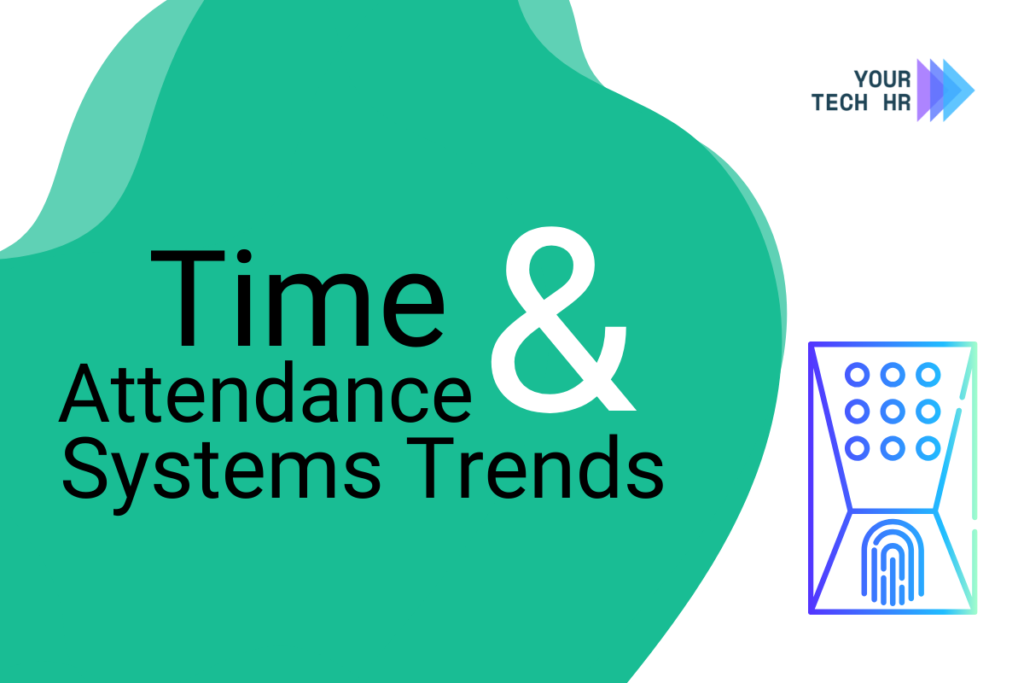Hello, busy professionals and managers! Ever wondered if your time and attendance system is keeping pace with the lightning-fast changes in technology? With workforce dynamics evolving quicker than ever, staying ahead of the curve is not just a goal, it’s a necessity. In today’s blog, we’re diving into the latest trends in time & attendance systems that are reshaping how businesses manage their most asset: time. Whether you’re a VP steering the ship, a manager optimizing operations, or simply someone keen on the future of work, this blog is your ticket to understanding how time and attendance technology can transform your business. Let’s get started!
Time & Attendance Systems Trends
The evolution of time and attendance systems is transforming how businesses manage their workforce. As we move further into 2024, several key trends are making waves in the industry. Here’s a deep dive into the most impactful changes:
Cloud-Based Time & Attendance
One of the most significant time and attendance systems trends is the shift toward cloud-based solutions. Time and attendance cloud solutions offer numerous advantages, including real-time data access, scalability, and cost savings. These systems enable businesses to manage their workforce from anywhere, ensuring that operations run smoothly even when remote work is involved.
Benefits of Cloud-Based Systems:
- Real-Time Data Access: Managers can access employee attendance data in real-time, making it easier to track hours worked and address issues promptly.
- Scalability: Cloud-based systems can grow with your business, accommodating more employees without the need for significant infrastructure changes.
- Flexibility: Employees can clock in and out from anywhere, anytime.
- Cost Savings: By eliminating the need for on-premises servers and maintenance, businesses can reduce their IT costs.
Incorporating a cloud-based solution can streamline your operations and improve overall productivity. It’s no wonder that the time and attendance software market is seeing a surge in demand for these solutions.
Mobile Time Tracking
With the rise of remote work and mobile devices, mobile time tracking has become a game-changer in the world of workforce management. Employees can clock in and out using their smartphones, making it convenient for those who work from different locations or are always on the move.
Key Features:
- GPS Tracking : Ensures employees are clocking in from their designated work locations.
- Push Notifications : Reminders for employees to clock in and out, reducing the chances of missed punches.
- Employee Self-Service : Allows employees to easily view their schedules, request time off, and check their hours worked, all from their mobile devices.
Mobile time tracking makes it easier for employees to stay on top of their schedules and for managers to oversee workforce productivity.
Biometric Authentication
Say goodbye to buddy punching and falsified time entries! Biometric authentication uses unique biological characteristics, such as fingerprints or facial recognition, to verify employee identities.
Advantages:
- Accuracy: Reduces errors associated with manual entries.
- Security: Enhances security by preventing unauthorized access.
- Convenience: Employees no longer need to remember PINs or carry ID cards.
The use of biometric attendance systems is a significant trend in time and attendance technology, ensuring that the data collected is accurate and secure.
AI-Powered Time Management
Artificial Intelligence (AI) is revolutionizing time management by predicting workforce needs and optimizing schedules. AI-powered systems can analyze patterns and make recommendations to improve efficiency.
AI Applications:
- Predictive Analysis: Anticipates workforce requirements based on historical data.
- Automated Scheduling: Creates optimal schedules considering employee availability and preferences.
- Performance Insights: Provides insights into employee productivity and areas for improvement.
AI-powered time management systems help businesses stay ahead by making data-driven decisions and enhancing overall productivity.
Integration with HRMS
Integration with Human Resource Management Systems (HRMS) is becoming a standard feature for time and attendance solutions. This integration allows for seamless data flow between time tracking and other HR functions like payroll integration and employee management.
Integration Benefits:
- Streamlined Processes: Reduces the need for manual data entry and minimizes errors.
- Enhanced Reporting: Provides comprehensive reports that combine attendance data with HR metrics.
- Improved Compliance: Ensures adherence to labor laws and company policies.
Integrating time and attendance systems with HRMS is crucial for maintaining a cohesive and efficient HR workflow.
Time & Attendance Tracking Trends:
The latest time and attendance tracking trends are revolutionizing how businesses monitor employee hours, with innovations like mobile tracking and biometric authentication leading the charge. These advancements are enhancing accuracy and efficiency in timekeeping.
Future of Work:
The future of work is being shaped by advanced time and attendance systems, which are increasingly integrating AI, mobile access, and cloud technology to provide more flexible and accurate workforce management solutions.
Employee Time Tracking Trends:
New employee time tracking trends highlight the shift towards more sophisticated systems that offer real-time data, mobile access, and integration with other HR tools, enabling businesses to better manage and analyze workforce data.
New Trends in Time and Attendance Systems:
New trends in time and attendance systems are focusing on enhanced automation, mobile accessibility, and integration capabilities, helping businesses optimize workforce management and reduce administrative burdens.
Time and Attendance Technology Trends:
Time and attendance technology trends include advancements in cloud solutions, AI-driven insights, and biometric authentication, all of which are setting new standards for accuracy and efficiency in managing employee time.
The landscape of time and attendance systems is rapidly evolving, driven by advancements in technology and shifting workplace dynamics. From cloud-based solutions to AI-powered management, these trends are shaping the future of workforce management.
Want to stay ahead in the game? Connect with YourTechHR experts today to discover how the latest time and attendance systems can revolutionize your workforce management.
FAQ
- What are the benefits of cloud-based time and attendance systems?
Cloud-based systems offer flexibility, real-time data access, and scalability, making them ideal for businesses of all sizes.
- How does a mobile time track work?
Mobile time tracking allows employees to clock in and out using their smartphones, often with features like GPS tracking and instant notifications.
- Why is biometric authentication important?
Biometric authentication enhances security and accuracy by using unique biological characteristics to verify employee identities.
- What role does AI play in time management?
AI helps predict workforce needs, automate scheduling, and provide performance insights, improving overall efficiency.
- How does integration with HRMS benefit businesses?
Integration with HRMS streamlines processes, enhances reporting, and ensures compliance with labor laws and company policies.
- What industries benefit most from mobile time tracking?
Industries with on-the-go employees, such as construction and sales, benefit significantly from mobile time tracking.
- Can AI-powered time management systems help small businesses?
Yes, AI-powered systems are beneficial for businesses of all sizes by providing data-driven insights and optimizing schedules.


